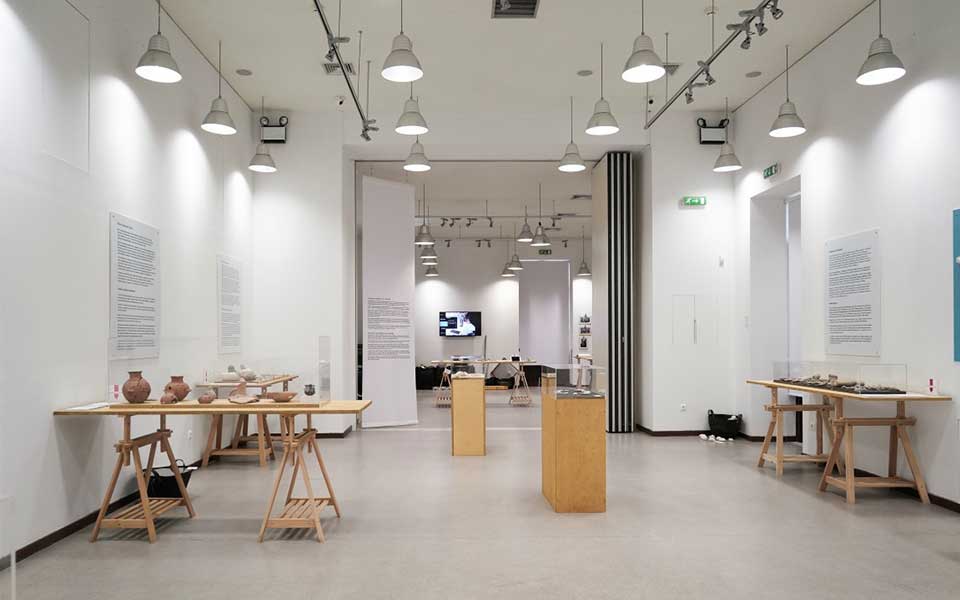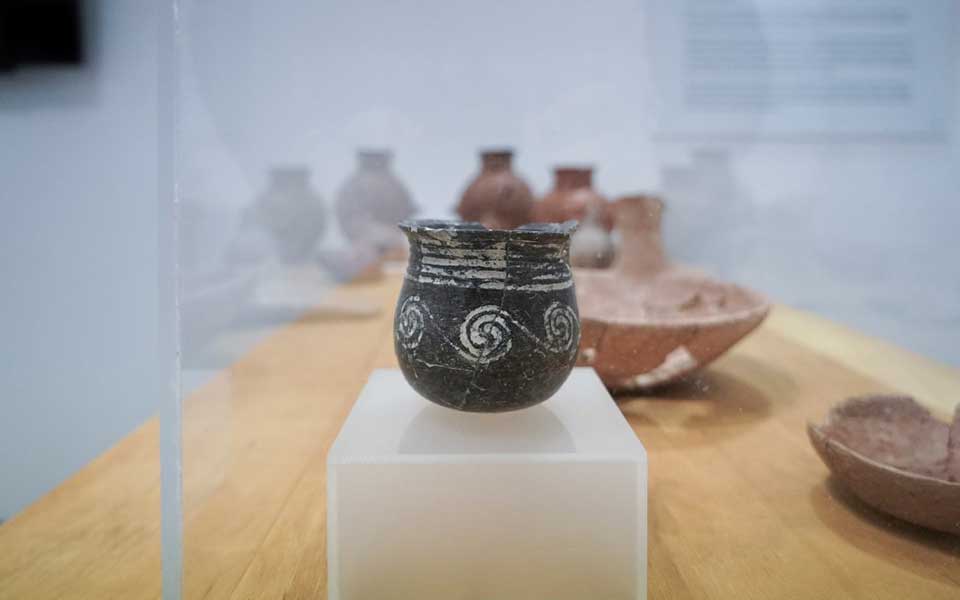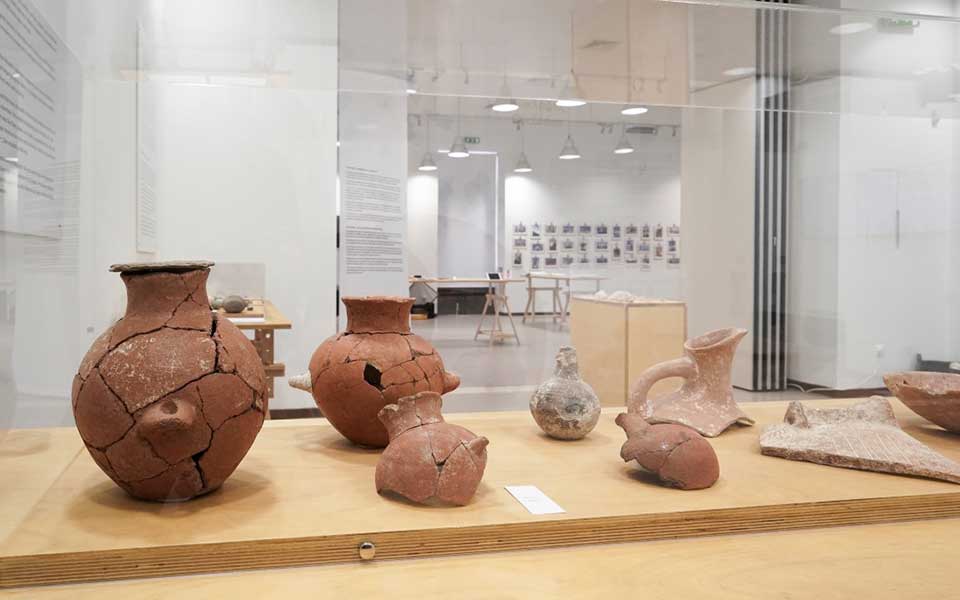Visitors to the Athens Municipal Gallery will be fascinated by the fragments of idols and mended pots that appear haphazardly laid out around the space, just as the archaeologists were who first discovered the shards on the uninhabited island of Keros dating to the Early Cycladic period (3200-2100 BC).
The prevalent theory about the mystery of the shattered idols and vessels is that they were part of a ritual observed by ancient inhabitants of the Cyclades who traveled to the island for a religious ceremony, smashed the items they used and took a fragment of them with them as they left.
“Look Across: A Settlement on Keros 4,500 Years Ago” opened at the gallery last month and runs through the end of August. The artifacts on show may not be impressive to look at, but they illustrate the importance of Keros in early Cycladic culture, explains the director of the Ephorate of Cycladic Antiquities, Dimitris Athanasoulis.

© Cambridge Keros project / https://www.opanda.gr/
The second part of the exhibition comprises finds from Dhaskalio, an islet off the coast of Keros which, 4,500 years ago, was a promontory of the bigger island.
Dhaskalio today is regarded as one of the most important prehistoric archaeological sites in the world, and the Athens show presents finds such as bronze tools and casts for making them, which illustrate daily life at the time and the civilization’s advances.
“The exhibition is doubly interesting because it presents pieces from an archaeological dig that have not been studied yet, so, in a way, it resembles an excavation,” says Athanasoulis.

© Cambridge Keros project / https://www.opanda.gr/
The exhibition is deliberately arranged to put visitors into the archaeologists’ shoes so they can observe the steps of the excavation process, how artifacts are labeled and recorded, and what modern tools and methods are employed. It also illustrates how a permanent exhibition is organized, which is the ultimate aim for the Keros artifacts, a project that is expected to be completed by the middle of next year.
The excavations on Keros and Daskalio were conducted by the University of Cambridge, under the auspices of the British School at Athens.
This article was first published at ekathimerini.com.











